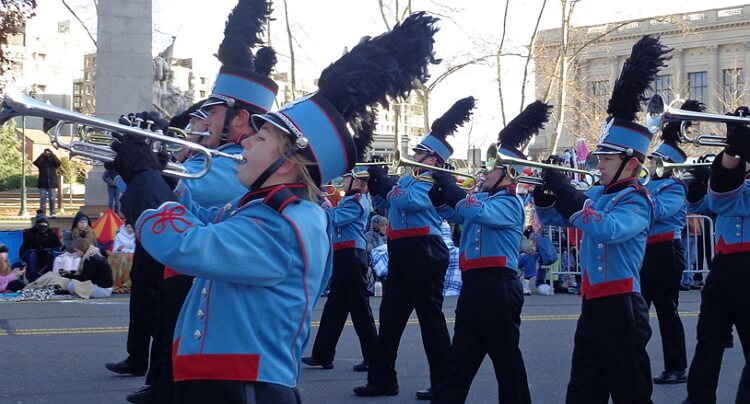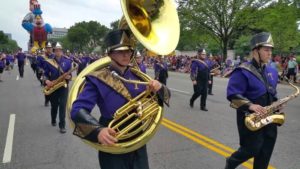Posture is a very critical aspect of marching technique. In fact, it can make or break the performance of your student marching band.
Improving the band’s posture ensures that there is no poor quality sound due to tension. A tense body produces a thin, shrill and unsupported tone because of inadequate breath support. Any drill choreographer, band director or band musician understands the vital role that posture plays. It is important for musicians to employ the right posture perfecting skills to improve the use of their instruments and the overall performance.
Posture details may vary depending on the instrument, but certain universal techniques can help improve your band’s marching technique. At Peak Performance Tours, we will create exceptional performance opportunities for your marching band and also guide you every step of the way.
1. Hold Your Head Up High
This not only improves your posture but it shows confidence in yourself as well as the band. Holding the head up enhances the general effect and the overall look of a marching band’s field show besides improving each individual musician’s posture.
2. Evenly Distribute Your Body Weight
Your body weight should be evenly distributed on the feet for a better marching experience. This involves displacing your body weight on the ball and heels of your feet. At least 60 percent of your body weight should go to the ball of the foot while 40 percent should be on the heel.
3. Align All Parts of Your Body Forward
Although this tip may sound confusing, it makes all the difference when practiced. To keep your marching band’s posture, all parts of the body should be aligned forward. This includes the feet, head, arms, shoulders and hips. Think about creating long and straight lines between the following parts of your body:
- Hips and ankles while keeping the knees straight but not locked
- Shoulders and hips
- Ears and shoulders
- Ears and ankles
4. Don’t Stiffen Your Legs
Keeping your legs straight is a helpful marching technique, but you must avoid stiffness. When the muscles around the knees are tense, you can’t march. Hence it is important to find the balance between relaxed and straight which helps you to be cautious of stiffness while also keeping you in perfect form.
5. Check Your Chin Placement
This aspect of posture is often neglected, but it can make a huge difference. Your chin should be raised up at a 10 degrees angle but being level also works as well. The chin should never drop below level since your posture will drop down with it.
6. Exercise
Posture fixes almost all issues in a band. Great posture ensures that musicians play louder and sound better while enhancing the band’s visual and musical performance. Regular exercise also plays a key role in improving your marching techniques. Some of the areas you should focus on include the legs, your core and back since these areas of the body help keep your balance and posture.
It takes a lot of concentration and determination to march while playing an instrument but being part of a student marching band is a rewarding experience.
Contact Peak Performance Tours for student performance and educational tours that meet your budget. Our highly skilled tour coordinators will work directly with you to customize your trips.




